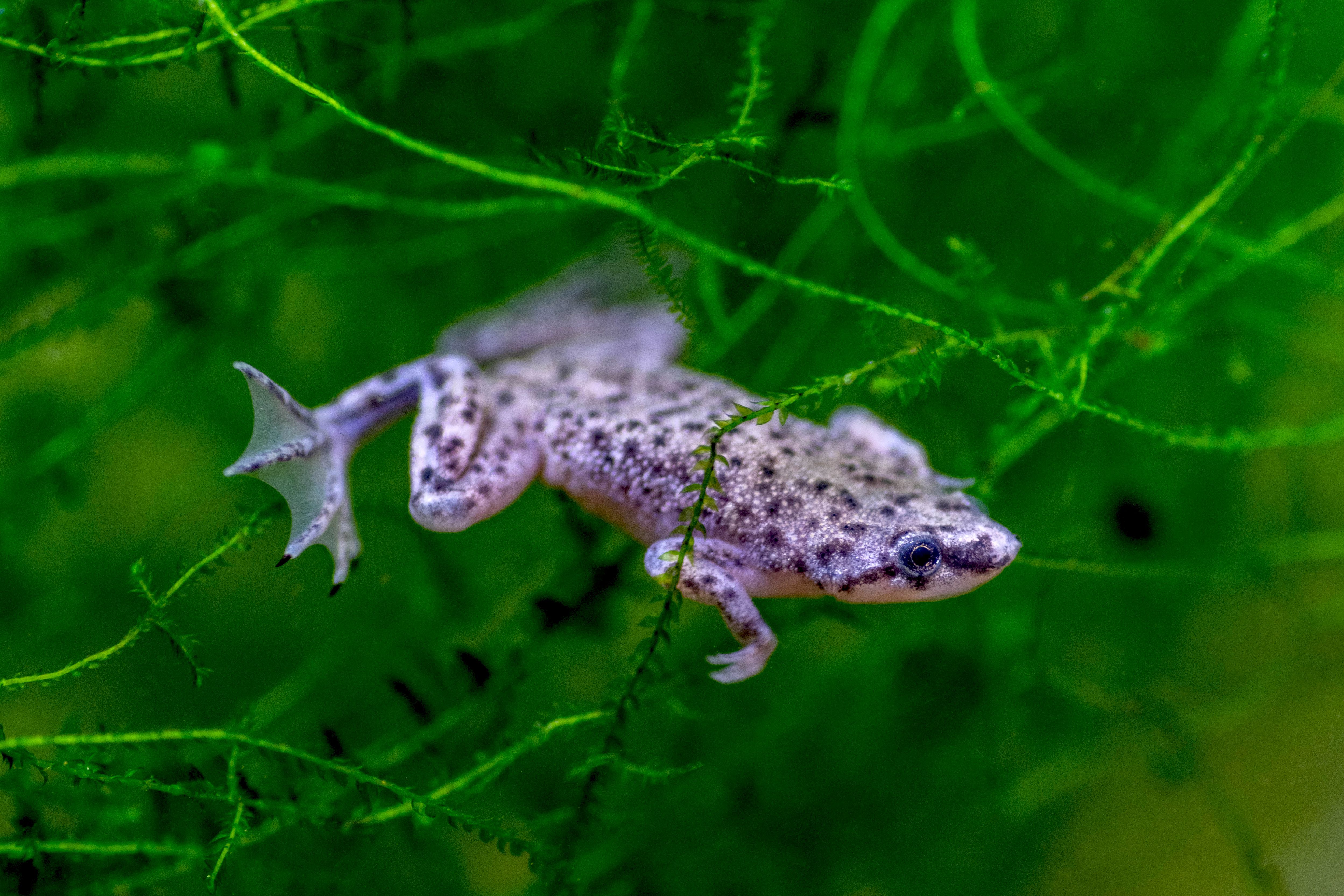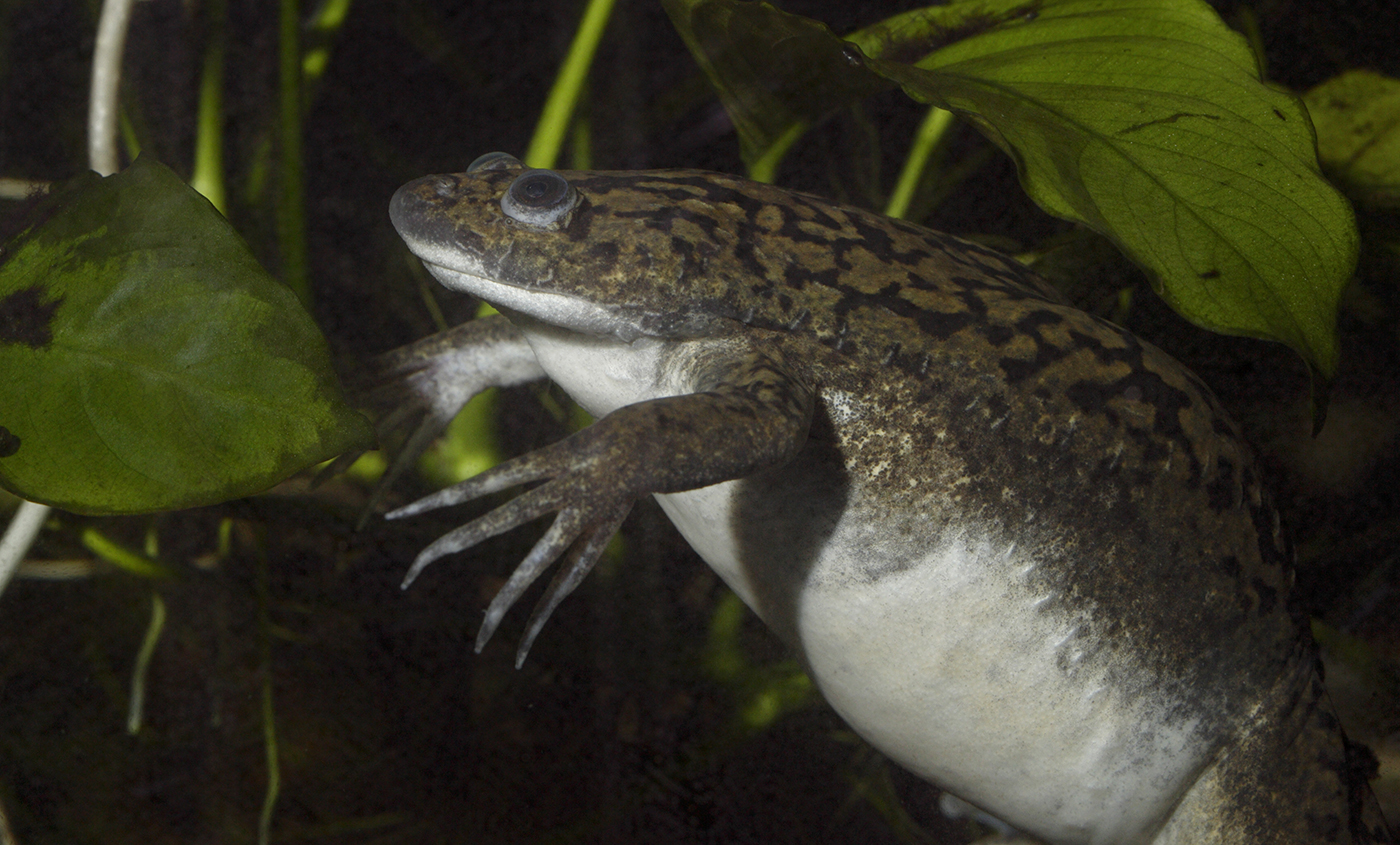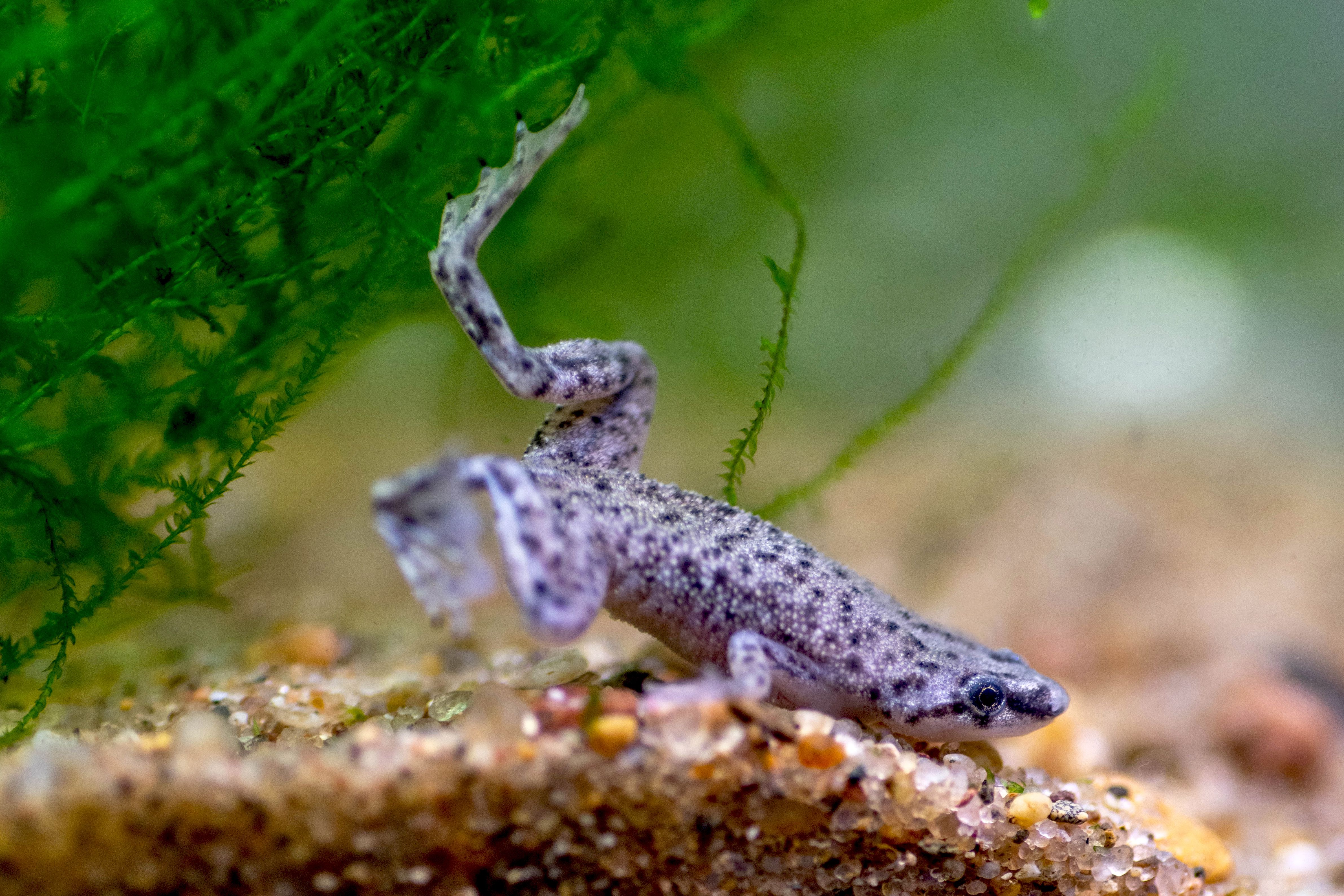Aquatic frogs are a fascinating group of amphibians that have adapted to living in water. While there are many different species of aquatic frogs, most of them have claws on their feet that help them swim and navigate through their watery habitats.
In this article, we will explore five types of aquatic frogs that are mostly clawed. From the African Clawed Frog to the Surinam Toad, these frogs have unique adaptations that make them well-suited to life in the water.
You are reading: 5 Types Of Aquatic Frogs Most Are Clawed
Whether you are a frog enthusiast or simply curious about these amazing creatures, read on to learn more about these fascinating aquatic frogs.

5 Types Of Aquatic Frogs Most Are Clawed
African Clawed Frog (Xenopus laevis)

The African Clawed Frog (Xenopus laevis) is a species of African aquatic frog belonging to the family Pipidae. Here are some key characteristics and information about this fascinating frog:
Scientific Classification:
– Domain: Eukaryota
– Kingdom: Animalia
– Phylum: Chordata
– Class: Amphibia
– Order: Anura
– Family: Pipidae
– Genus: Xenopus
– Species: X. laevis
Physical Description:
– Flattened body with a smaller, wedge-shaped head
– Multicolored smooth skin with blotches of greenish-gray or brown on its back
– Off-white underside with a yellow hue
– Webbed hind legs with three “claws” on each foot (not true claws, but cornified tips)
– Front limbs are small with non-webbed fingers
Habitat and Distribution:
– Found throughout much of Sub-Saharan Africa, from Nigeria and Sudan to South Africa
– Also present in isolated, introduced populations in North America, South America, Europe, and Asia
Behavior and Adaptations:
– Adept swimmer, but clumsy on land and crawls rather than hops
– Can change their appearance to match their background, becoming darker, lighter, or mottled
– Possess a lateral line system that is very sensitive to vibrations, enabling them to detect predators and prey in murky water
Conservation Concerns:
– African Clawed Frogs are often carriers of diseases that are harmful to amphibians and fish
– Their ability to rapidly reproduce and spread makes them a significant conservation concern
– Invasive populations have been established in various regions, posing a threat to native species
Surinam Toad (Pipa pipa)
Read more : Top 9 Most Dangerous Insects In The World
The Surinam Toad (Pipa pipa) is a purely aquatic frog species belonging to the family Pipidae. Here are some key characteristics and information about this fascinating frog:
Scientific Classification:
– Domain: Eukaryota
– Kingdom: Animalia
– Phylum: Chordata
– Class: Amphibia
– Order: Anura
– Family: Pipidae
– Genus: Pipa
– Species: P. pipa
Physical Description:
– Largest member of its genus, with an exceptionally depressed and almost entirely flat body
– Broad, flat, triangular head without a tongue
– Mottled brown leaf-like appearance, with a light brown body and darker brown spots on the back
– Very small, lidless, bead-like black eyes
– Large, flipper-like hind feet and short forelimbs with webless digits that end in a star-shaped organ
Habitat and Distribution:
– Widespread distribution in South America, including tropical rainforests and the Caribbean
– Inhabits murky ponds, swamps, and waterways
Reproduction and Parental Care:
– Unique reproductive strategy where the female carries the eggs in honeycombed chambers on her back
– Eggs develop on the female’s back, and fully formed froglets emerge after a period of 4-5 months
– Direct development of young, with no larval stage
Behavior and Feeding:
– Ambush predator that lies in wait in the water for prey to come into range
– Captures prey using suction feeding
– Blends into the leaf litter and its surroundings
Western Clawed Frog (Xenopus tropicalis)
The Western Clawed Frog (Xenopus tropicalis), also known as the Tropical Clawed Frog, is a species of frog in the family Pipidae. Here are some key characteristics and information about this fascinating frog:
Scientific Classification:
– Domain: Eukaryota
– Kingdom: Animalia
– Phylum: Chordata
– Class: Amphibia
– Order: Anura
– Family: Pipidae
– Genus: Xenopus
– Species: X. tropicalis
Physical Description:
– Small, wholly aquatic frog with a flattened body
– Small, protruding eyes located almost on the top of the head
– Body length of 4-6 cm (1.6-2.4 in)
– Webbed hind legs with three “claws” on each foot (not true claws, but cornified tips)
– Smaller size and shorter generation time compared to the African Clawed Frog (X. laevis)
Habitat and Distribution:
– Found in various countries in West Africa, including Benin, Burkina Faso, Cameroon, Ivory Coast, Equatorial Guinea, Gambia, Ghana, and Guinea
– Inhabits freshwater habitats such as ponds, swamps, and waterways
Research Significance:
– The only species in the genus Xenopus to have a diploid genome
– Its genome has been sequenced, making it a significant model organism for genetics and developmental biology research
– Advantages over X. laevis in research include a shorter generation time, smaller size, and a larger number of eggs per spawn
Zaire Dwarf Clawed Frog (Hymenochirus boettgeri)

The Zaire Dwarf Clawed Frog (Hymenochirus boettgeri) is a species of aquatic frog in the family Pipidae. Here are some key characteristics and information about this fascinating frog:
Scientific Classification:
– Domain: Eukaryota
– Kingdom: Animalia
– Phylum: Chordata
– Class: Amphibia
– Order: Anura
– Family: Pipidae
– Genus: Hymenochirus
– Species: H. boettgeri
Physical Description:
– Small, fully aquatic frog with a flattened body and a rounded snout
– Webbed feet with small claws on each toe
– Body length of 2.5-4 cm (1-1.5 in)
– Brown or grayish-brown coloration with darker spots or stripes
Habitat and Distribution:
– Found in various countries in Central Africa, including Nigeria, Cameroon, Equatorial Guinea, Gabon, and the Central African Republic
– Inhabits freshwater habitats such as ponds, swamps, and waterways
Behavior and Adaptations:
– Nocturnal and primarily active at night
– Feeds on small invertebrates such as insects, crustaceans, and worms
– Possesses a lateral line system that is very sensitive to vibrations, enabling them to detect predators and prey in murky water
Conservation Concerns:
– The International Union for Conservation of Nature has assessed its conservation status as being of least concern
– However, habitat loss and degradation due to human activities such as deforestation and pollution may pose a threat to its populations
Indonesian Floating Frog (Occidozyga laevis)
The Indonesian Floating Frog (Occidozyga laevis) is a species of frog in the family Dicroglossidae. Here is some information about this frog:
Scientific Classification:
– Domain: Eukaryota
– Kingdom: Animalia
– Phylum: Chordata
– Class: Amphibia
– Order: Anura
– Family: Dicroglossidae
– Genus: Occidozyga
– Species: O. laevis
Physical Description:
– Small, fully aquatic frog with a flattened body and a rounded snout
– Webbed feet with small claws on each toe
– Body length of 2-3 cm (0.8-1.2 in)
– Brown or grayish-brown coloration with darker spots or stripes
Habitat and Distribution:
– Found in various countries in Southeast Asia, including Indonesia, Malaysia, and Thailand
– Inhabits freshwater habitats such as ponds, swamps, and waterways
Behavior and Adaptations:
– When floating, they keep their eyes above the water like little alligators and snatch up any live insects in their vicinity
– Possesses a lateral line system that is very sensitive to vibrations, enabling them to detect predators and prey in murky water
Conservation Concerns:
– There is no specific conservation status for this species, but habitat loss and degradation due to human activities such as deforestation and pollution may pose a threat to its populations
FAQS
1. What are the 5 types of aquatic frogs that are most commonly clawed?
The 5 types of aquatic frogs that are most commonly clawed are:
1. African Clawed Frog (Xenopus laevis)
2. Surinam Toad (Pipa pipa)
3. Western Clawed Frog (Xenopus tropicalis)
4. Zaire Dwarf Clawed Frog (Hymenochirus boettgeri)
5. Indonesian Floating Frog (Occidozyga laevis)
2. What is the scientific name of the African Clawed Frog?
Read more : 10 Types Of Animals With Antlers
The scientific name of the African Clawed Frog is Xenopus laevis.
3. How can I differentiate between African Clawed Frogs and Dwarf Clawed Frogs?
African Clawed Frogs have eyes on the top of their heads, while Dwarf Clawed Frogs have eyes on the sides of their heads. Additionally, African Clawed Frogs have flat snouts, while Dwarf Clawed Frogs have pointed snouts. African Clawed Frogs have webbed back feet and digits on their front feet, while Dwarf Clawed Frogs have four webbed feet.
4. Are African Clawed Frogs good pets?
African Clawed Frogs can be enjoyable pets to watch, but they are not meant for handling. As aquatic frogs, their skin dries out quickly when they’re out of the water.
5. What do African Clawed Frogs eat?
African Clawed Frogs feed on small fish, water bugs, insects, spiders, and worms.
6. What is the biggest threat to African Clawed Frogs in the wild?
The biggest threat to African Clawed Frogs in the wild is water pollution.
7. How do African Clawed Frogs protect themselves from predators?
African Clawed Frogs have the ability to change their appearance to match their background, becoming darker, lighter, or mottled. They also have a lateral line system that is very sensitive to vibrations, enabling them to detect predators and prey in murky water.
Source: https://petstutorial.com
Category: Animals










